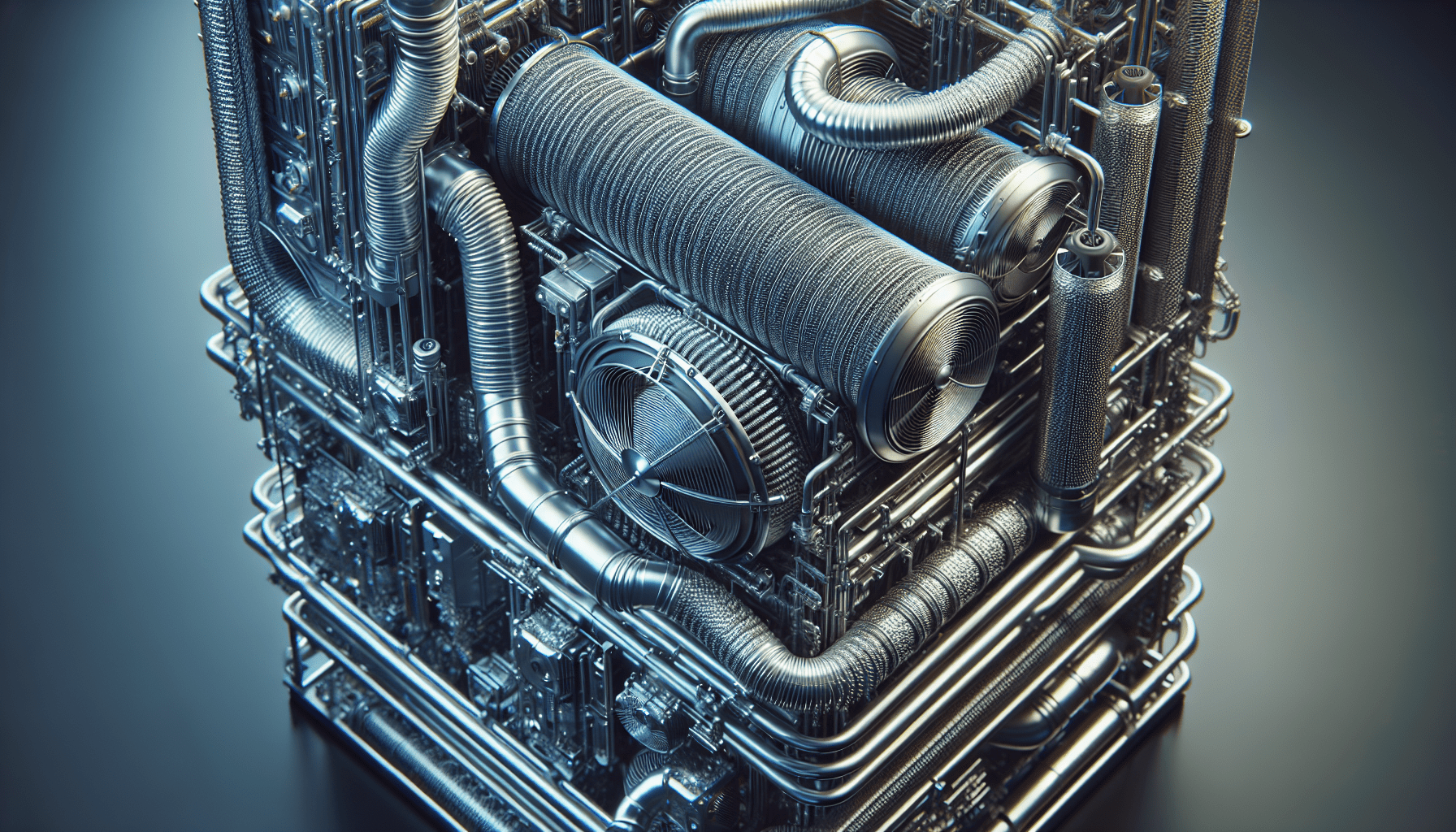

HVAC Services
Get Professional Repairs From The Area's Trusted HVAC Technicians. Ask About Our Services! We Offer Professional Heating & Cooling System Repairs And Guarantee Long-Lasting Results.
Got Question? Call us: (850) 678-2665Financing
The Science Behind HVAC: A Deep Dive
Discover the wonders of HVAC: the unsung hero keeping your home cozy or cool. Dive into the science behind these systems and the drama of air and heat dance.

Do you ever wonder how you can relax in a cool room while the summer sun blazes outside or stay cozy indoors when winter howls at your window? Behold the marvel of HVAC systems, the unsung heroes maintaining the delicate balance of indoor climates. In this guide, we journey through the intriguing mechanisms that make this balancing act possible. Let’s illuminate the wonders of HVAC science so you can appreciate the sophisticated dance of air, heat, and technology.

What is HVAC?
HVAC stands for Heating, Ventilation, and Air Conditioning. These systems regulate your indoor environment, ensuring comfort all year round. But there’s more here than meets the eye. HVAC systems juggle multiple tasks to maintain air quality and energy efficiency within your home. Let’s see what makes these systems tick.
Components of HVAC Systems
HVAC systems have core components, each fulfilling a specific role. These elements are like puzzle pieces that fit together seamlessly to control your home’s temperature and air quality.
- Heater: The heater warms up your home during colder months. It usually runs on gas, oil, or electricity.
- Air Conditioner: It keeps you cool when temperatures rise. Air conditioning can be central or split depending on your needs.
- Ventilation System: This part exchanges indoor and outdoor air, maintaining air freshness. It filters pollutants and dust, improving indoor air quality.
Having the right blend of these components ensures a balanced and efficient system. Let’s dig deeper into how they work together.
Heating: Bringing the Blaze Indoors
Imagine freezing air getting transformed into a cozy warmth that invites you to snuggle into your couch. That’s the magic of the heating component of HVAC systems.
How Heating Works
The heating system takes cold air, warms it up, and distributes it around your home. This could be through radiators, underfloor heating, or vents, depending on the system in place:
- Furnaces: Use combustion to heat air. The heated air is then blown through ducts.
- Heat Pumps: Can heat and cool spaces. They transfer warmth from one area to another, typically from outside to inside during winter.
- Boilers: Heat water, the steam or hot water flows through pipes, releasing heat.
Heating can turn a chilly room into an inviting sanctuary. But what about sweltering heat days? Don’t sweat it—air conditioners have you covered!
Air Conditioning: Staying Cool Under Pressure
Air conditioning systems offer relief by removing heat and moisture from indoor air. This oasis from heat is vital to comfort and health.
How Air Conditioning Works
An air conditioning system absorbs warmth from indoors and ejects it outside. The process might seem simple, but it involves impressive science:
- Refrigerants: These chemicals easily change from gas to liquid and back, absorbing heat as they evaporate.
- Compressors: Move refrigerants through the system, pressurizing warm gas so it can cool, condense, and return inside to soak up more heat.
- Evaporator Coils: Part of the indoor component; these coils allow the refrigerant to absorb heat from indoor air.
- Condensers: Located outside, they release absorbed heat into the atmosphere.
The balance maintained by different air conditioning parts ensures indoor serenity even on the hottest days. However, both heating and cooling rely heavily on ventilation. Let’s look into why that is.
Ventilation: Breathing New Life Indoors
Ventilation is crucial in maintaining a healthy indoor environment. It ensures a constant flow of fresh air, removing stale air and reducing indoor pollution levels.
Types of Ventilation
Ventilation systems offer various methods to circulate air:
- Natural Ventilation: Uses natural forces like wind and buoyancy to circulate air through openings.
- Mechanical Ventilation: Relies on fans and ducts to circulate air. This can be either exhaust, supply, or balanced.
Effective ventilation can greatly improve air quality, reducing risks of mold, allergens, and other pollutants. Let’s not forget about the brain that controls these elements—the thermostat.

Thermostat: The Brain of the Operation
A thermostat is the little control box that puts you at the helm of your HVAC system’s power. This clever device helps manage indoor climate to meet your comfort needs intelligently.
How the Thermostat Works
At its core, the thermostat senses the room temperature and compares it to your desired setting:
- Smart Thermostats: Use sensors and machine learning to optimize your settings over time.
- Programmable Thermostats: Allow you to set different temperatures for different times or days.
- Standard Thermostats: These manual devices are easy to use and reliable.
These devices help you find a balance, ensuring both home comfort and energy conservation. Now that you know what the thermostat does, let’s explore why energy efficiency is vital for HVAC systems.
Energy Efficiency: Balancing Comfort and Costs
Energy efficiency ensures you enjoy comfort in an eco-friendly and economical manner with your HVAC system.
Strategies to Boost Efficiency
Many innovations make HVAC systems more energy-efficient despite the energy demands:
- Regular Maintenance: Clean systems work more efficiently, so routine checkups keep everything in top shape.
- Modern Equipment: Upgrading to better models can mean significant energy savings.
- Proper Insulation: Well-insulated homes retain heat or cool air longer, meaning HVAC systems work less.
- Solar Energy: Some systems incorporate solar power to operate cleanly and with reduced costs.
Efficient systems save money and help protect the planet, replacing wasted energy with conscious conservation. Still curious about how HVAC systems affect indoor air quality? You should be!
Indoor Air Quality: A Breath of Fresh Air
The quality of the air inside your home is critical for your health and well-being. Let’s explore how HVAC systems help maintain good air quality.
Factors Affecting Air Quality
Poor air quality can come from many sources. Here are several factors that might affect it:
- Pollutants: Dust, mold spores, and allergens can circulate if not filtered.
- Humidity Levels: Too much moisture can lead to mold, while too little leads to dry air.
- Chemicals: Volatile organic compounds (VOCs) from paint, furniture, or cleaning products can pollute the air.
HVAC systems can mitigate these issues through effective filtering and dehumidification, offering a cleaner, healthier indoor environment for everyone. Ever wonder how all these systems come together? Let’s map it out.
Integration: Harmonizing HVAC in Your Home
Pulling together the heating, cooling, ventilation, and air quality elements requires a system that operates in harmony.
Ensuring Seamless Integration
Making sure all components work smoothly involves coordinated efforts:
- Zoned Systems: Allow precise temperature control in different areas.
- Automation: Systems equipped with sensors and smart thermostats adjust automatically to your schedule.
- Professional Installation: Ensures all parts align correctly for peak operation.
Successful integration means having your home respond to your needs as efficiently and comfortably as possible, just like symphony players following a conductor’s cue.
Maintenance and Troubleshooting: Keeping Things Running Smoothly
Regular care is key to sustaining the health and function of your HVAC system. Let’s examine maintenance techniques to keep it working efficiently.
Routine Maintenance Tips
Keeping your HVAC system humming isn’t hard if you know what to do:
- Change Filters: Regularly swapping out filters improves air quality and system efficiency.
- Inspect and Clean: Clear areas around outdoor units from debris during each season change.
- Check Thermostat Settings: Ensure the thermostat reflects your family’s scheduling needs.
- Monitor Performance: Pay attention to unusual sounds or spikes in bills.
Consistent care prevents minor issues from snowballing into costly repairs. Now, if something goes awry, here’s what you can do.
Addressing Common Issues
An effective approach to troubleshooting involves understanding frequent problems:
- Uneven Cooling or Heating: Might mean blocked vents or incorrect thermostat settings.
- Unusual Noises: Could indicate loose parts or debris in the system.
- Weak Airflow: Usually caused by dirty filters or obstructions.
By recognizing these signs, you can quickly address problems before they escalate. For issues beyond your DIY skills, consulting an expert is a wise call.
Final Thoughts
Armed with a deeper understanding of HVAC systems, you can appreciate the harmony they create in your home. And when you need a little guidance or those skilled hands for maintenance, Tempacure Heating and Air Conditioning is just a call away.
Feel free to reach out to Tempacure Heating and Air Conditioning at:
Address: 325 Cedar Ave S, Suite B, Niceville, FL 32578
Phone: (850) 678-2665
Website: Tempacure HVAC
They bring professionalism and expertise, ensuring your HVAC systems function smoothly and efficiently throughout the seasons. Enjoy the serenity of a balanced indoor climate, knowing your system is in capable hands.




